Therapist Garden Tips: Cultivating Calm in Your Backyard
Gardening can be more than just a hobby; it can be a meaningful way to improve your mental and physical health. Therapeutic gardens are designed to provide you with a peaceful and healing environment, promoting well-being and relaxation.

You’ll discover how to create a therapeutic space that meets your specific needs. Whether you’re new to gardening or an experienced gardener looking to add a therapeutic touch, these tips can help you cultivate a garden that encourages tranquility and growth. Explore the benefits and find out how easy it can be to transform your garden into a personal sanctuary.
1) Mindful Seating Arrangement

Creating a mindful seating arrangement in your garden is key to relaxation. Choose comfortable furniture, like cushioned benches or chairs.
Position your seating to face a focal point. This could be a water feature, a grouping of colorful flowers, or a serene statue.
Add personal touches like soft throws, pillows, or small tables for your tea or book. This makes the space inviting and cozy.
2) Sensory Plant Selection
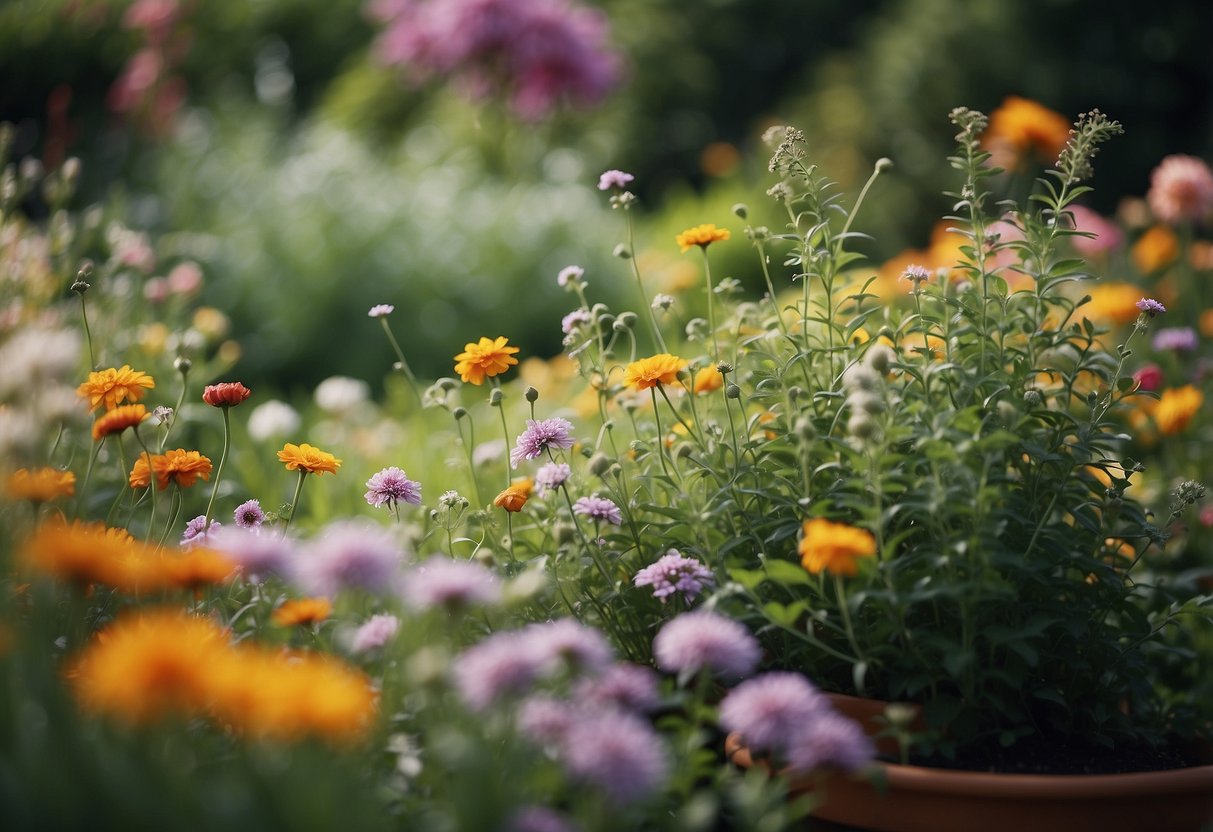
Choosing the right plants for your sensory garden is key. Think about what senses you want to engage. For sight, pick colorful flowers like sunflowers and marigolds. They add bright spots to your garden.
For touch, consider plants with interesting textures. Lamb’s ear has soft, fuzzy leaves. Adding herbs like rosemary can bring a delightful scent.
Finally, don’t forget sound. Grasses like bamboo rustle pleasantly in the wind. This can create a relaxing atmosphere. Select a mix that suits your preferences and enjoy your sensory garden.
3) Zen Water Features
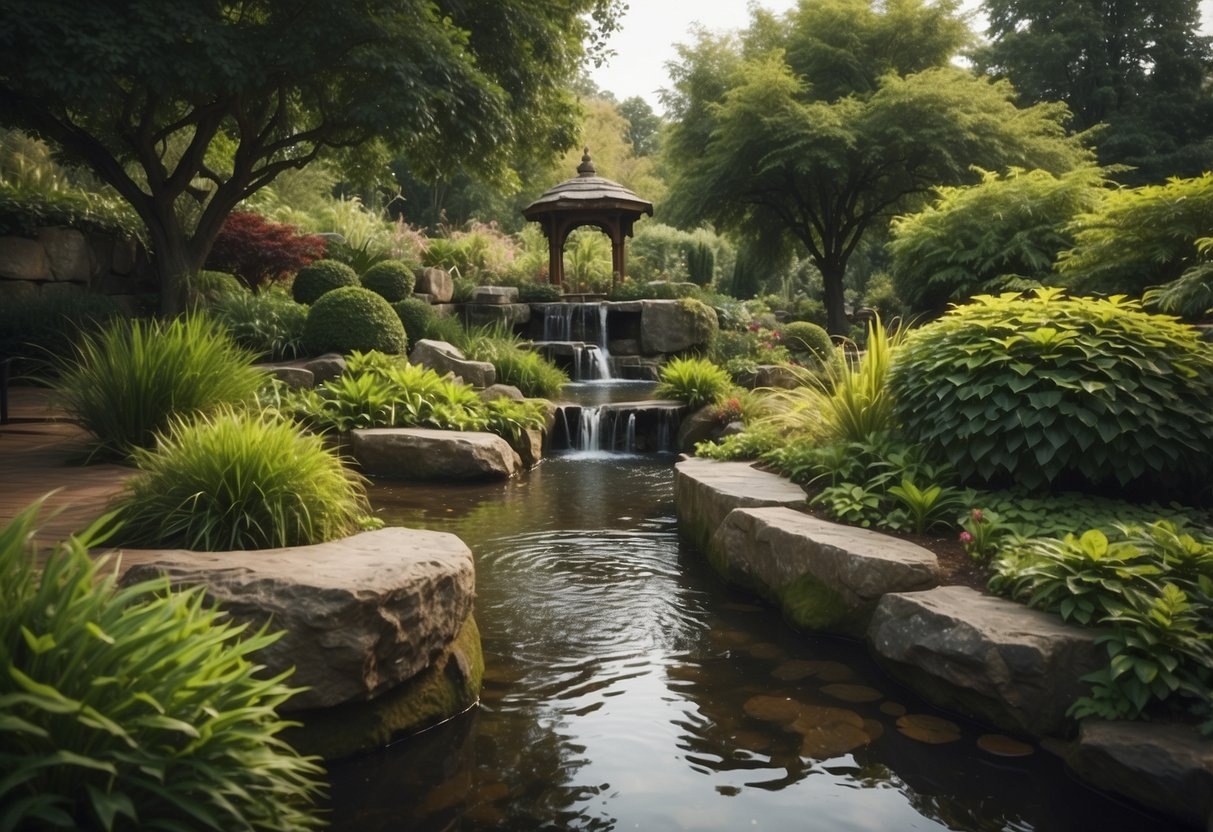
Water features bring tranquility to your garden. Adding elements like a koi pond or a stone basin can transform your space.
The sound of water trickling is soothing. It can help you relax and meditate more peacefully.
A small fountain is a great choice. It adds both visual and auditory beauty. Check out tips on Wabi-Sabi design.
4) Meditation Corners
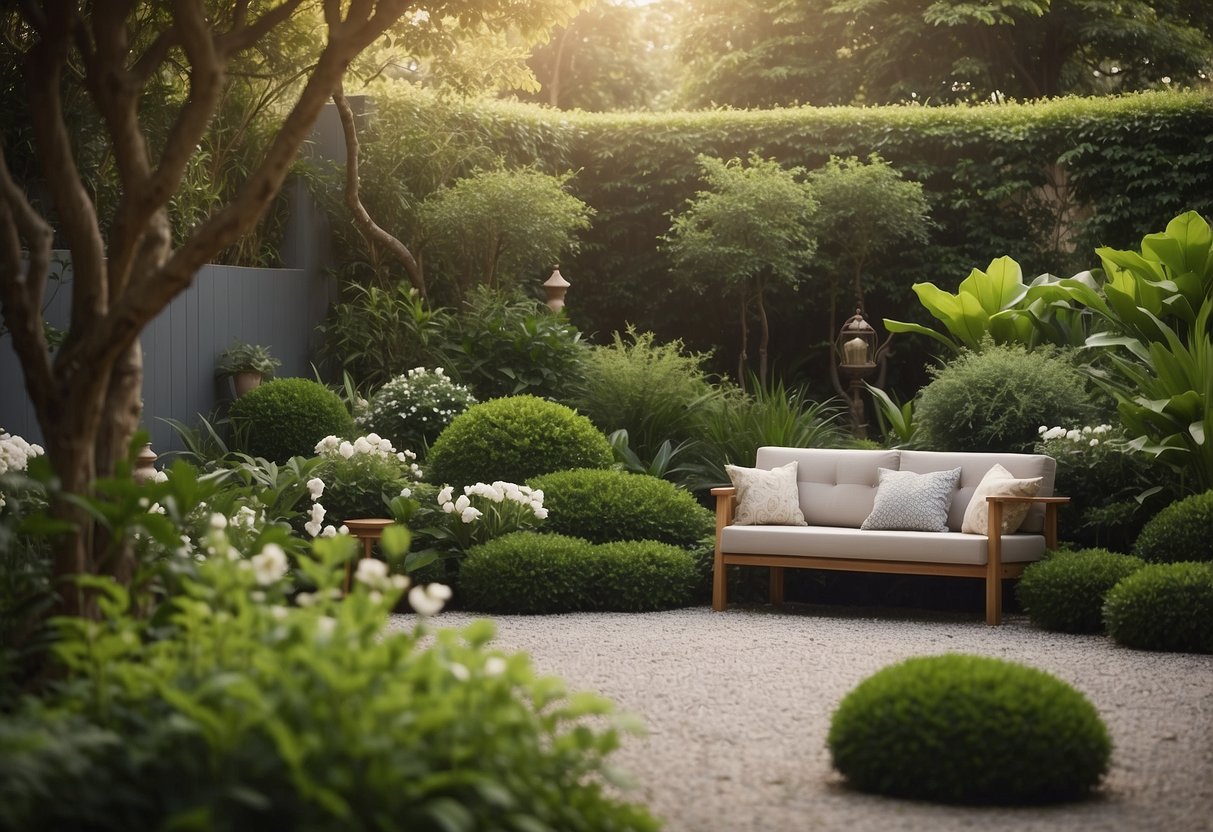
Creating a meditation corner in your garden can be a simple and rewarding process. Find a quiet, comfortable location with minimal distractions. This space should feel peaceful and inviting.
For decor, use simple elements like a comfortable chair or a hammock with pillows. You can add garden benches or meditation cushions. Incorporate soothing plants and repeat the same types to avoid a “busy” look.
In addition, consider elements like rocks or Asian-style decor to enhance the tranquil atmosphere. A well-chosen spot will become your perfect retreat.
5) Therapeutic Herb Garden

A therapeutic herb garden is a calming space where you can grow various herbs known for their healing properties.
Plants like chamomile are great because they soothe skin irritation and promote relaxation. Chamomile enjoys full sun and well-draining soil.
Planting echinacea can help boost your immune system, making it a staple in many therapeutic gardens.
Include lavender for its stress-relieving aroma. Its scent can calm your mind and body.
With these herbs, your garden can become a peaceful retreat that supports your well-being.
6) Comfortable Hammocks
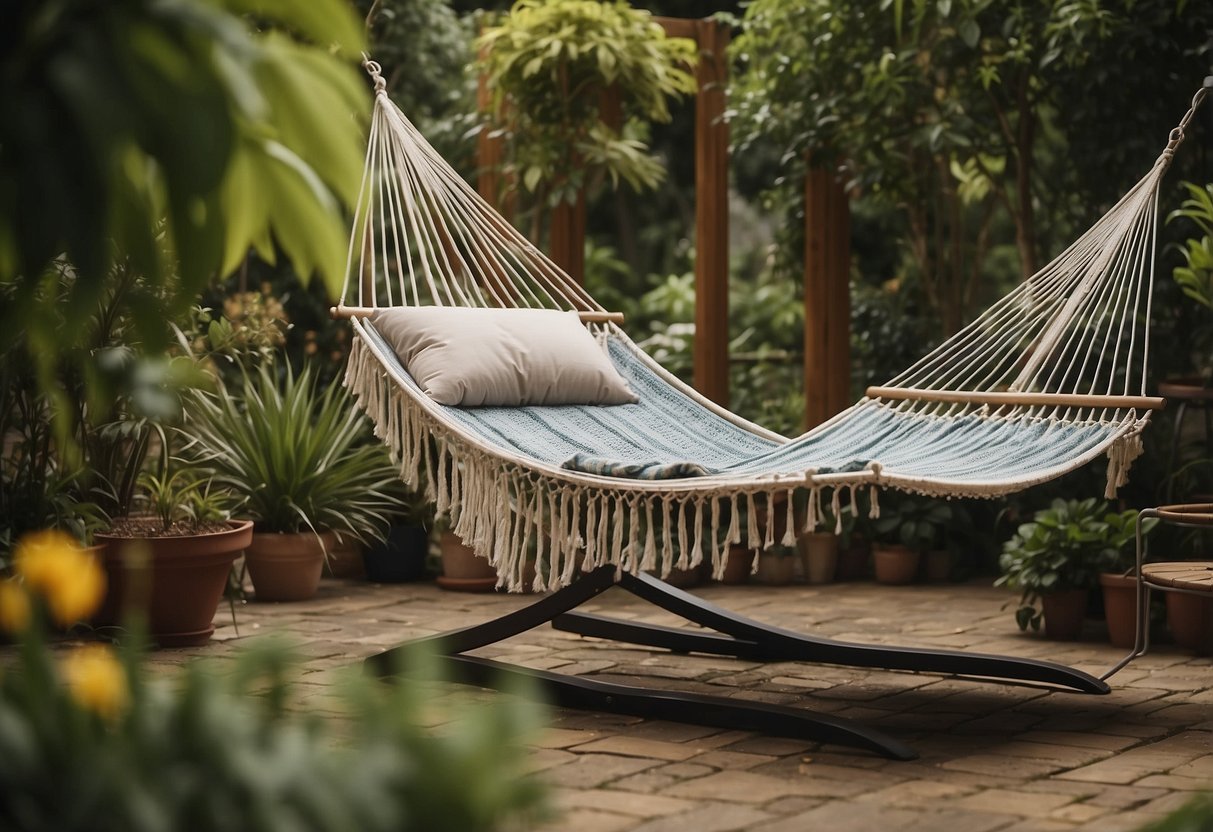
Adding a hammock to your therapeutic garden creates the perfect spot to unwind. Look for a sturdy, well-made hammock that can hold your weight comfortably.
Think about placing your hammock in a shaded area to protect you from the sun. Consider using a portable folding hammock if you need flexibility.
If you enjoy camping, camping hammocks are a great choice. They can be lightweight and easy to set up in your garden.
7) Private Reflection Spaces
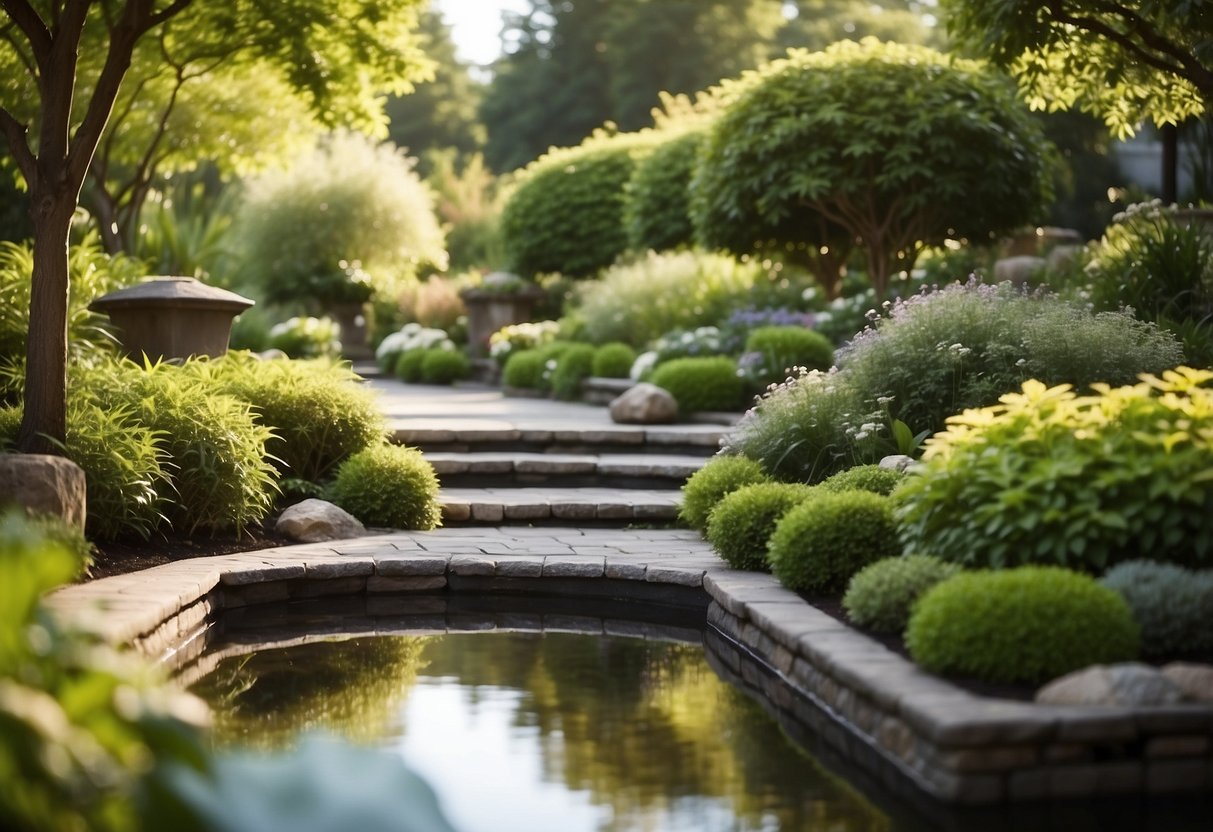
Creating a private reflection space in your therapist garden is key to providing a peaceful retreat. Look for a quiet corner away from distractions where you can fully relax.
Consider placing a comfortable chair or bench there. Surround this spot with tall plants or a small fence to give you a sense of privacy.
Incorporating elements like a small water feature or wind chimes can enhance the calming atmosphere. These elements help drown out background noise, making it easier to focus on your thoughts.
8) Butterfly Habitats

Butterflies love sunny spots. They need sun to stay warm, so choose a garden area that gets plenty of sunlight. Aim for 6-8 hours of direct sun daily.
Plant flowers that attract butterflies. Good choices include milkweed, coneflowers, and lavender. These plants provide nectar for butterflies and leaves for their caterpillars.
Place some flat stones and water sources like shallow dishes. Butterflies sit on the stones to bask in the sun and use the water for drinking and cooling off. Avoid using pesticides, as they can harm these delicate insects.
9) Art Therapy Installations
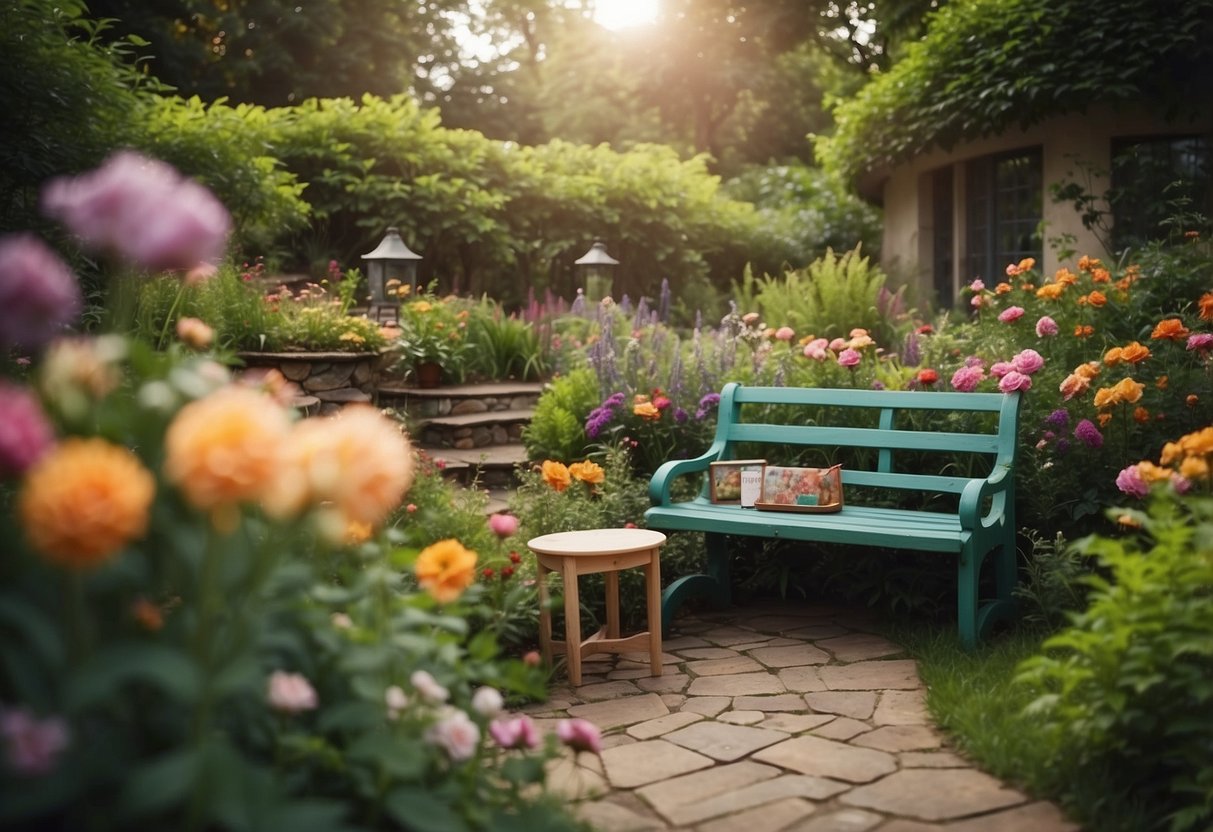
Art therapy installations in a garden offer a unique way for you to combine creativity with nature. These installations can range from simple sculptures to more complex interactive pieces.
You can use natural materials like stones, wood, and plants to create visually appealing and therapeutic spaces.
Consider adding features that engage multiple senses. For instance, wind chimes can add soothing sounds, while textured pathways can provide a tactile experience. These elements can help improve emotional well-being and stress relief.
By incorporating art therapy into your garden, you create a space for personal expression and relaxation.
10) Nature Journaling Spots

Your backyard can be a great place to start nature journaling. Look at the plants, insects, and birds that visit.
Try visiting local parks. These usually have a variety of trees, flowers, and wildlife to observe.
Head to a nearby forest or nature preserve. The different ecosystems provide many interesting subjects.
By the lake or river, you might find unique water plants and animals. Enjoy the sound of water while journaling.
Benefits Of Gardening For Therapists
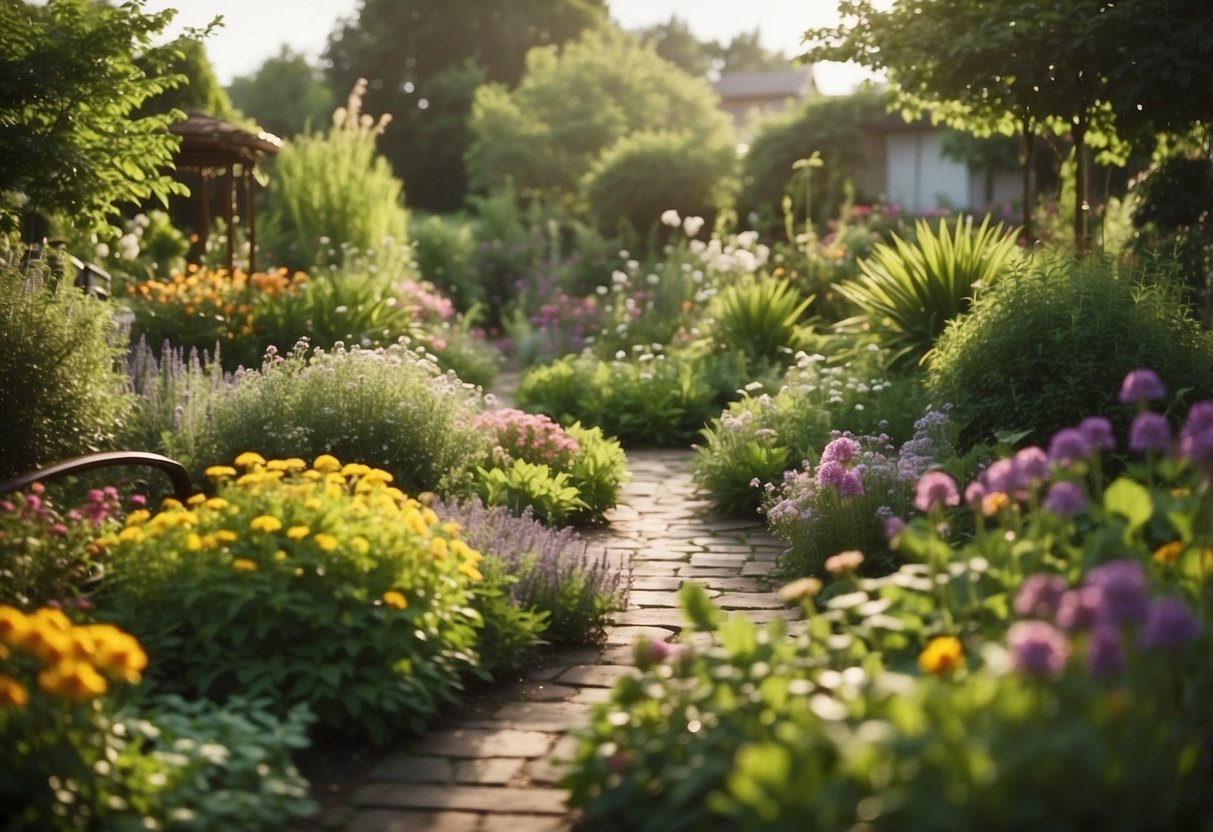
Gardening offers multiple benefits for therapists. It’s great for stress reduction and enhancing therapeutic skills. Engaging in gardening activities helps promote mental wellness.
Stress Reduction And Relaxation
Gardening is an effective way to reduce stress. Digging in the soil and tending to plants can lower anxiety levels and improve your mood. The physical activity involved, like planting and weeding, serves as a mild form of exercise that helps release stress-reducing endorphins.
Spending time surrounded by greenery can also have a calming effect. Being in nature allows you to disconnect from everyday worries. This quiet time can be used for reflection, helping you relax and gain a clearer perspective on your workload.
Moreover, interacting with plants promotes mindfulness. As you focus on taking care of each plant, it keeps your mind engaged and away from stressors. This type of focused attention can be incredibly relaxing and beneficial for your mental health.
Enhancing Therapeutic Skills
Gardening can improve various essential skills in therapists. When you garden, you develop fine motor skills through activities like planting seeds and pruning leaves. These skills are vital for detailed tasks in your practice, such as note-taking and handling paperwork.
You enhance your observational skills by monitoring plant growth and health. This ability to notice intricate details is valuable in recognizing subtle changes in your clients’ behaviors during sessions.
Gardening also offers opportunities for problem-solving. You daily face challenges like pests, plant diseases, or soil issues. Solving these problems can sharpen your analytical skills and creativity, which are crucial in therapeutic settings.
Finally, gardening fosters patience and empathy. Watching plants grow over time teaches you to value progress at a slow pace, a lesson easily transferable to the pace of therapeutic work with clients.
Designing A Therapeutic Garden
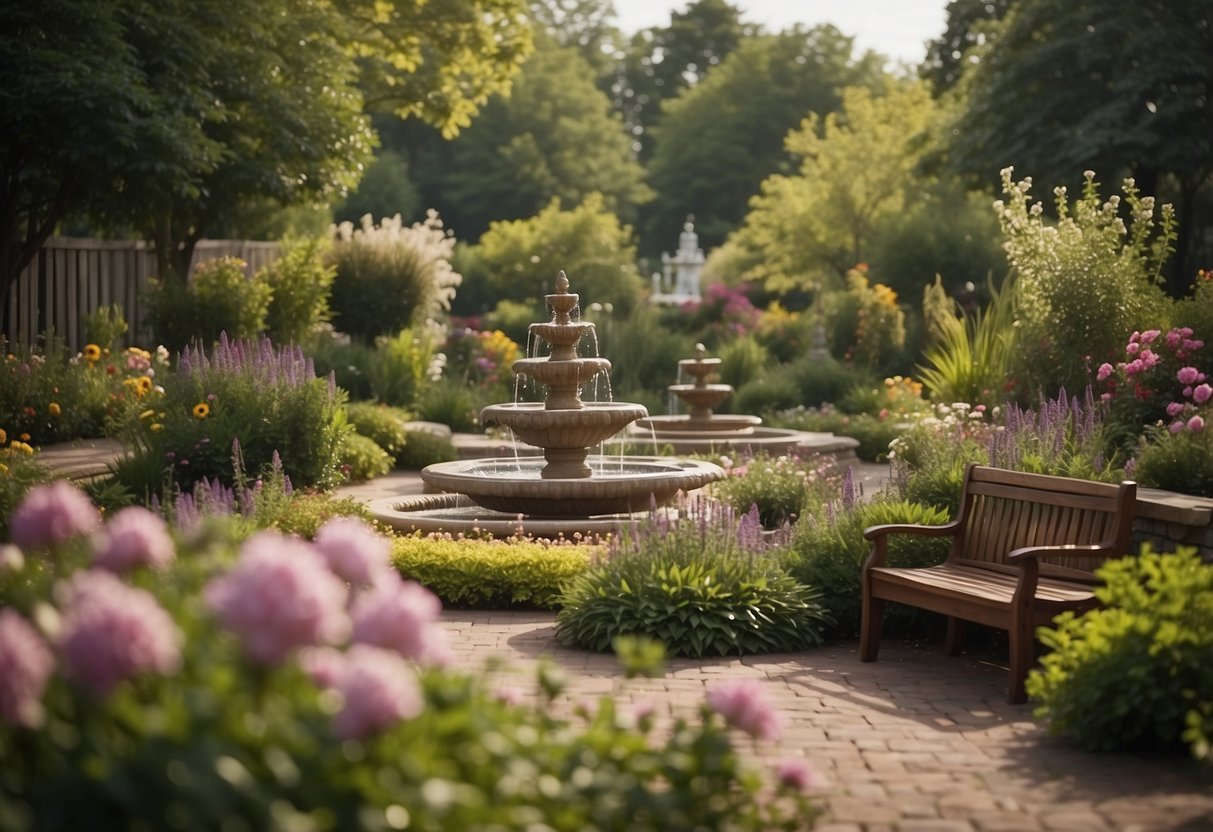
When designing a therapeutic garden, focus on selecting the right plants and creating a peaceful atmosphere. These elements work together to promote healing and relaxation.
Choosing The Right Plants
Choosing the right plants is key to a successful therapeutic garden. Look for plants that offer sensory engagement, such as aromatic herbs, colorful flowers, and textured leaves. Lavender, rosemary, and mint are great for their calming scents.
Visual appeal is important too. Use a mix of flowering plants like sunflowers, marigolds, and roses. These add vibrant colors that can uplift the mood.
Remember to include easy-to-care-for plants as well. Maintenance should be simple so that stress is minimized. Think about succulents and perennials for less upkeep.
Finally, consider plants that attract wildlife like butterflies and birds. This can add another layer of interest and tranquility to your garden. Milkweed and echinacea are good choices for inviting these visitors.
Creating A Tranquil Ambiance
To create a tranquil ambiance, start with choosing the right location. Aim for a spot that is sunny and flat, with easy access to water. This helps ensure the garden is both accessible and enjoyable.
Incorporate elements of sound and texture. Wind chimes, water fountains, and rustling leaves can add soothing sounds. Textured pathways made of stone or wood chips can engage the sense of touch.
Privacy is also key. Use shrubs or fencing to create a secluded, peaceful space away from distractions. This can help the garden feel more like a private retreat.
Lighting can also enhance the tranquility. Use soft, low-level lighting to make the garden usable in the evening without being harsh. This helps maintain a serene environment even after the sun goes down.
By paying attention to these details, you will create a garden that is not only beautiful but also a refuge of calm and healing.
Gardening Techniques For Mindfulness

Learning how to garden mindfully can enhance your well-being by reducing stress and helping you connect with nature. This involves incorporating specific practices and engaging in hands-on activities.
Incorporating Mindful Practices
To start, pay attention to the sensations you experience while gardening. Feel the soil between your fingers, breathe in the fresh air, and listen to the sounds around you. These activities help ground you in the present moment.
Choose plants that you find calming and appealing. This can be flowers with a pleasant fragrance or vegetables you enjoy eating. This selection process can be relaxing and rewarding.
Another technique is to set aside regular times for gardening. Having a consistent schedule helps you build a routine, making it easier to focus on the task at hand.
Hands-On Activities For Clients
To engage clients in mindful gardening, introduce simple exercises. One activity is “forest bathing,” where clients walk through a garden, taking in the sights, sounds, and smells. This can reduce stress and promote a sense of calm.
Another useful task is creating a sensory garden. Include plants with different textures, colors, and smells. Clients can touch and smell the plants, helping them to stay present and focused.
Encourage clients to practice deep breathing while gardening. They can focus on their breath as they plant or water their garden. This can help them feel more relaxed and mindful.







